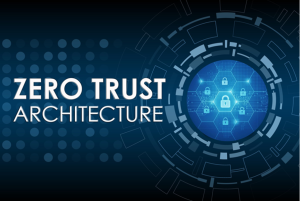
In 2017 WikiLeaks published “Vault 7,” a huge cache of CIA documents describing its hacking tools and targets. Among thousands of pages was a section in which CIA operatives rated popular security products. One of these notes discusses Comodo Internet Security – a suite that includes antivirus, firewall, and sandboxing features. In the CIA’s internal lingo, Comodo was called “a colossal pain in the posterior,” or “PITA”. In cybersecurity slang this means Comodo was very difficult for their malware to bypass. In other words, CIA hackers found Comodo’s defenses frustratingly effective – which is actually a testament to the software’s strength.
The Vault 7 index itself confirms this. It notes that to defeat Comodo’s protection, CIA malware had to be hidden in the Windows Recycle Bin folder. In other words, Comodo was catching threats everywhere except this one “magical” location. One leaked memo bluntly says:
“Comodo is a giant PITA. It can and will catch and show your entire chain of execution and a great deal of your file I/O” .
This means Comodo logs exactly what a program does (its “chain of execution”) and the files it touches. That thorough monitoring is why Comodo is hard for hackers to fool. The CIA notes go on to describe how only by launching malware from the Recycle Bin could they “partially defeat” Comodo. Even then, Comodo’s sandbox could still catch malicious activity after the initial launch. In short, the CIA called Comodo a “PITA” (pain in the ass) because it is designed to be a tough barrier against threats.
Why Being a “PITA” is a Compliment
Calling Comodo a PITA sounds negative, but in context it’s a backhanded compliment. The CIA staff meant that Comodo’s security features are annoyingly robust for an attacker, which is good for users. As Comodo’s CEO later noted, being called a “pain in the ass” by a spymaster is “a badge of honor”. It shows Comodo was doing its job. In fact, the Associated Press reported on Vault 7 that CIA hackers praised Comodo for catching everything by default. They also warned fellow agents not to upgrade to a known weaker version (“Comodo 6”), where protections were reduced .
Putting it simply: PITA = hard to hack. It means Comodo’s defenses – if properly used – will block or log malware that slips through other tools. For cybersecurity, that’s good news. When intelligence agencies struggle to bypass a product, it suggests the product is effective. Many of Comodo’s core features contribute to this toughness:
- Default-deny & sandboxing: Comodo uses a default-deny strategy. That means any unknown program is treated as untrusted and run in a secure “sandbox” rather than allowed free rein. Inside a sandbox, even if the program is malicious it cannot harm your real system. The CIA quote “it literally catches everything until you tell it not to” refers to this: by default Comodo stops and inspects all unfamiliar code. This is unlike many antivirus products that assume unknown files are safe unless proven otherwise.
- Strict trust model: Comodo’s software classifies files into three categories: Trusted, Untrusted, or Unknown. Known good programs (from Comodo’s whitelist or verified publishers) run normally. Clearly malicious files are quarantined. Everything else is labeled “Unknown” and forced into the sandbox. This explicit trust model ensures that only vetted software operates without restriction, making it harder for malware to hide. (Comodo also maintains a “Trusted Vendor” list of popular software, so those apps run without interference .)
- Behavior monitoring (Viruscope): On top of antivirus scanning, Comodo includes a feature called Viruscope. This watches sandboxed programs in real time and alerts on suspicious behavior. For example, if a contained app tries to modify system settings or delete files in an unusual way, Viruscope can flag it. This extra layer helps catch smart malware that might evade signature scans.
- Comprehensive logging: As the CIA memo noted, Comodo logs an “entire chain of execution and a great deal of your file I/O”. This means if malware does run, Comodo can show exactly what files it created or modified and what processes it launched. Such detailed forensics help security analysts reverse and fix attacks more easily.
- Free and user-friendly: Comodo provides a fully functional free version for Windows users. Reviewers have noted that “Comodo’s strength lies in a completely free version and ease of use”. Despite its technical power, Comodo’s interface is generally accessible to non-experts. The free availability means individuals and organizations can benefit from its strong defense without extra cost, which broadens its adoption and testing.
- Firewall and HIPS: In addition to antivirus, Comodo includes a personal firewall and Host Intrusion Prevention System. The firewall learns normal program behavior and blocks suspicious network connections, while HIPS enforces rules about which programs can perform system-level actions. These layers work together so that even if malware gets past one line of defense, another may stop it.
Taken together, these design choices make Comodo particularly stubborn to infiltrate. That is exactly why the CIA analysts griped about it: it worked too well. To evade Comodo, the CIA had to find a loophole (running code from the Recycle Bin). Even then, Comodo could still catch the malware after it started. In cybersecurity terms, Comodo’s approach greatly increases the chance that hidden threats are detected or contained.
What WikiLeaks Published and How Comodo Was Portrayed
When WikiLeaks released Vault 7, it included both raw CIA manuals and a community “Wikileaks Research” platform. The above quotes come from leaked CIA documents (as shown on WikiLeaks’ site) and were picked up by news outlets. For example, the Washington Post noted that CIA hackers “took potshots” at anti-virus firms. Comodo’s quote appeared on WikiLeaks and was quickly discussed in security forums and media. The context was that CIA developers were sharing tips on how to defeat anti-virus (as part of their malware toolset documentation). Comodo’s name appeared along with dozens of other products in a table of antivirus bypass techniques .
Crucially, Vault 7 made it clear that the CIA’s critique was not a general attack on all users. It was an internal note on how to keep covert tools hidden. Still, it put Comodo in the spotlight and invited interpretation. Rather than saying “Comodo is bad,” the leak shows the CIA admired Comodo’s security, even as it looked for one flaw to exploit. Comodo’s CEO Melih Abdulhayoglu publicly responded that the comment was a positive sign of Comodo’s effectiveness. He also clarified that the cited weaknesses were from old versions – modern Comodo 10 (and later) had fixed them. In fact, the leaked documents mention a “Gaping Hole of DOOM” in Comodo 6.x , but those issues have long been patched.
Why This Matters for Users and Organizations
For the average user or IT manager, what does all this mean? First, it highlights the importance of strong security defaults. Comodo’s default-deny, sandbox-based approach clearly gave the CIA a hard time. By contrast, many traditional antivirus programs use default-allow (only blocking known threats). The Vault 7 leaks suggest that a default-deny model can be more resilient against unknown attacks.
Second, the incident reminds us to keep security software updated. The CIA memo complained about Comodo 6.x’s weakness – but Comodo’s team already fixed that in newer versions. Regular updates and patches are essential, whether for antivirus, operating systems, or applications. Even very secure products have vulnerabilities over time if not maintained. In this case, Comodo’s later releases corrected the hole the CIA found .
Third, it shows that no defense is perfect. Even Comodo had one blind spot (the Recycle Bin launch). So security is multi-layered: using antivirus, firewalls, encryption, and safe practices together. The CIA’s hack-through method – planting malware in an overlooked folder – is a reminder that attackers look for any gap. Yet by forcing them to use a trick like that, Comodo effectively raises the bar.
Finally, the Vault 7 story is a confidence booster for Comodo users. If the CIA calls your security “a pain in the ass,” chances are it’s catching a lot of stuff! It signals that Comodo’s protections are actually working as intended. Organizations can take it as independent validation: an intelligence agency spent resources to figure out how to defeat Comodo – implying Comodo was a substantial obstacle.
Comodo’s Value in Cybersecurity
In summary, the WikiLeaks Vault 7 disclosures cast Comodo in a flattering light. The CIA’s callout of Comodo as a “PITA” for hackers is evidence of its rigorous defenses. Comodo’s security suite – with its default-deny policy, sandboxing, real-time behavior analysis, and detailed logging – turns out to be exactly the kind of hurdle that even nation-state hackers respect. For users and organizations today, Comodo remains a viable and cost-effective security solution. Its combination of free availability and strong technology (endorsed inadvertently by the CIA’s frustration) makes it worthy of consideration. Put simply, Comodo being labeled a “pain in the ass” by the CIA is, as Comodo’s CEO said, a badge of honor – a sign that Comodo is doing what it should to keep systems and communications protected.




